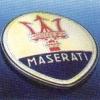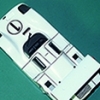I suspect this race may have been covered before but I'l mention it again for two reasons.
IMHO it was one of Jim Clark's greatest drives. I know the fastest cars broke down or got delayed but to bring the awful, and in this race, very battered Lotus 40 into second place was a superb drive. Car and Driver described it as a "champion's performance" .. "the front end was lifting so badly on acceleration that he had to bang on what brakes he had left at each turn's apex just to bring it down enough to see round the turn"
The other reason to post is that it was one of the greatest international driver gatherings in US racing history. Jim Clark, Graham Hill, Dan Gurney,Jackie Stewart, Chris Amon, and of course, Bruce McLaren from F1 racing. From Indy racing A J foyt, Parnelli Jones, Mario Andretti , Jim Hurtibise and Roger McCluskey. US road racing was represented by Jim Hall, Hap Sharp, Walt Hansgen,Ronnie Buckman, Bob Bondurant, Dick Thompson, Ken Miles, Augie Pabst and Charlie Hayes.
The Field was huge 58 cars entered of which 29 were decent level Group 7 cars. 2 Chapparal's, 3 Lotus 40's, 3 Lotus 30's , 6 McLarens, 6 Lola Chverolets and 3 Lola Fords among them. Qualifying and race attrition was very high due to a very, very dumb qualifying system but at least that gave the huge crowd plenty to see.
And big the crowd was as you can see from these two YT videos.
I suspect this race marked the beginning of true CanAm and the end of tradional Grup 7 at least in the USA.


















